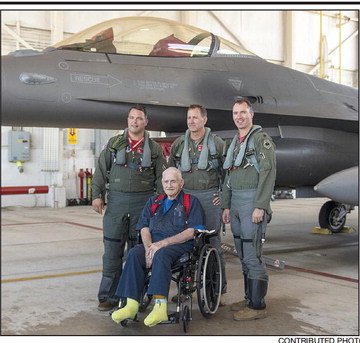Two pilots, two eras, one shared mission


It happened to Louie Landini numerous times, just when he was slipping into a nice nap, that low-flying F-16 fighter jet would thunder-buzz his house south of Greenwood. Up there s...


It happened to Louie Landini numerous times, just when he was slipping into a nice nap, that low-flying F-16 fighter jet would thunder-buzz his house south of Greenwood. Up there s...